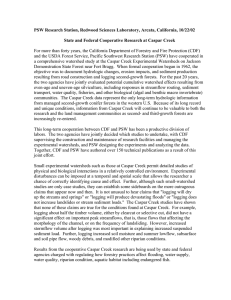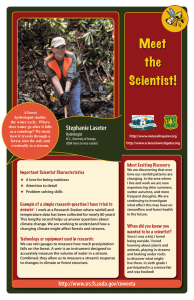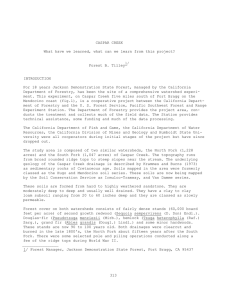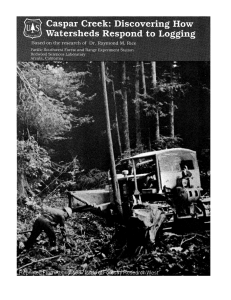Document 10556366
advertisement
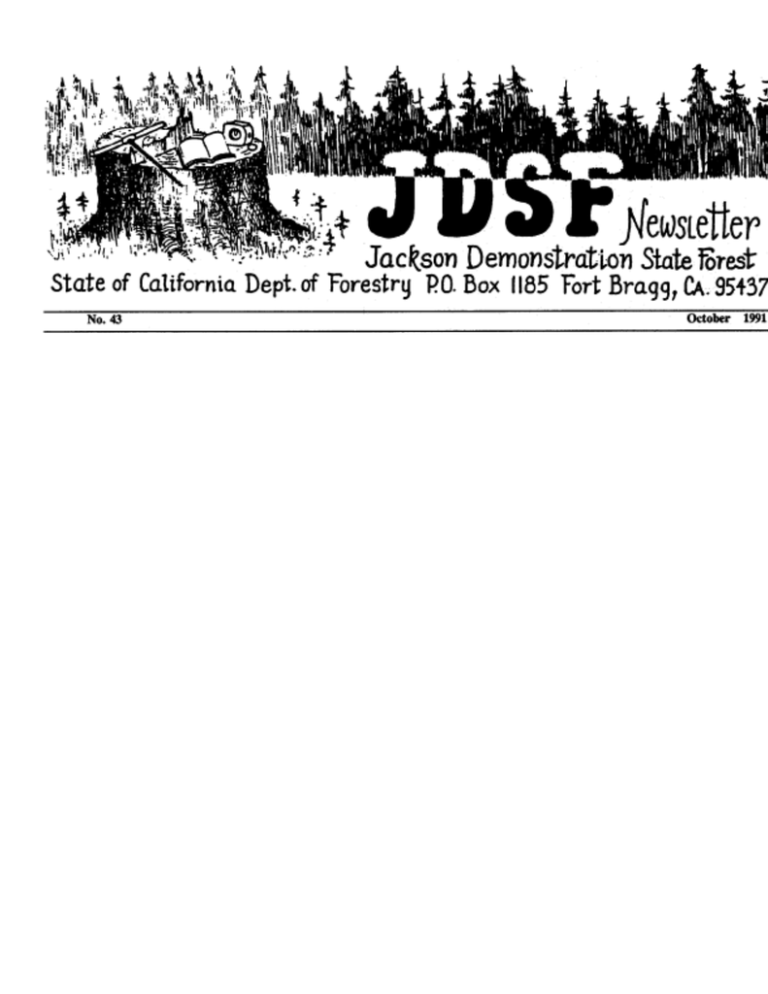
North Fork Caspar Creek Stream Biology Study Micheal S. Parker 1/ Timber harvesting is one of the most widespread land-uses in forested watersheds throughout western North America. It has long been recognized that timber removal, primarily through clearcutting, may have significant impacts on some environmental conditions within streams draining forested watersheds. It is also clear that logging related impacts are highly variable among streams from different regions, primarily due to varying influences of climate, geology and forest type. In addition, logging effects on streams of similar size within a region can vary depending on the magnitude of disturbance (ie., area clearcut and density and location of access roads and landings) and the use of practices intended to minimize impacts (ie., leaving riparian buffer zones, improved road building practices, and cable vs. tractor logging). Potential effects of logging on stream environments include: (1) increased sediment input and deposition within the stream channel, (2) changes in flow regime and channel morphology, (3) increased penetration of sunlight to the streambed with associated increases in stream temperature and algae growth, (4) changes in woody debris inputs and distribution, with associated changes in physical habitat conditions, (5) initial reductions in coarse detritus inputs (leaves and twigs from the forest canopy) followed by changes in detrital composition as the watershed passes through different successional stages (ie., from coniferous forest to a plant community dominated by shrubs to a community dominated by alder and back to coniferous forest), and (6) changes in inputs and transport of nutrients and other chemical constituents. Such changes in stream environments can produce significant changes in stream biota. Since spring of 1987, a group of aquatic ecologists from the University of California, Davis' Department of Land, Air, and Water Resources, under the guidance of professor Allen Knight, have been studying the effects of timber harvesting on stream biota in N. F. Caspar Creek. The specific goal of their research is to determine how current logging practices within a relatively undisturbed second-growth redwood forest influence the distribution and abundance of algae and invertebrates in a small headwater stream. Algae and detritus are at the base of the food chain in streams and invertebrates, which depend on these food resources, are an important food resource for juvenile fish. The North Fork Caspar Creek Experimental Watershed (NFCCEW), located within the Jackson Demonstration State Forest, has been the site of ongoing, cooperative research between the California Department of Forestry and the U. S. Forest Service Pacific Southwest Forest and Range Experiment Station for over 30 years. The primary focus of research within the NFCCEW has been to assess responses of physical processes (eg., changes in sediment yield, bedload transport, channel morphology, and flood peaks) to logging in a relatively undisturbed second-growth redwood forest. More recently, studies have included determining changes in habitat conditions for juvenile salmon and steelhead. The research being conducted by U. C. Davis scientists will provide valuable information relating changes in physical conditions within the stream to changes in important biological characteristics in addition to physical characteristics of fish habitat. The basic design of the study is to monitor algae and invertebrate assemblages along the same stream segments twice yearly for six years; three years prior to and three years following logging. Sampling sites are located at points upstream and downstream of ephemeral tributary junctions (figure 1). These locations will allow comparisons 1/ Researcher, Graduate Student, Department of Land, Air and Water Resources, University of California, Davis Page 7 to be made before and after logging at specific sites along the main channel (sites B and G), and between sites upstream and downstream of tributaries whose watersheds have been logged (sites G and C) versus those whose watersheds have not been logged (sites I and H). In a recent report, Knight et al. presented details of biotic conditions within N. F. Caspar Creek from 1987 to 1989, the period prior to logging. As is typical of heavily shaded headwater streams, algae growing in N. F. Caspar Creek is extremely sparse and consists exclusively of a thin layer of diatoms (small single-celled algae with cell walls of silica) covering the streambed. Following logging, with increased light penetration to the streambed, algae is likely to become more abundant and shift from being dominated by very small diatom species tightly attached to stones within the streambed to a community consisting of filamentous green algae and larger diatoms less tightly attached to the substrata. Such shifts are already apparent at sites I and G which were logged in 1989 and 1990, and persist below tributary ZY logged in 1986. Important invertebrates in N. F. Caspar Creek include mayflies (order Ephemeroptera), true flies (order Diptera, dominated by the family Chironomidae or "midges"), caddisflies (order Trichoptera), and stoneflies (order Plecoptera). The most abundant invertebrates feed primarily on the diatom layer or fine particulate detritus. Changes in algal assemblages and sources of detritus may thus have strong effects on these invertebrate groups. Preliminary results indicate that small, relatively-fast growing mayflies and midges are more abundant following logging, probably due to increases in algae abundance. Similar results have been reported for other coniferous forest streams of the Pacific northwest. This study is currently in the post-logging phase and comparisons of biotic conditions in the stream following logging are being made with conditions in the three years prior to logging. Field sampling will continue through 1993, after which a complete analysis of the effects of current logging practices within a second-growth redwood forest on stream communities will be made.
